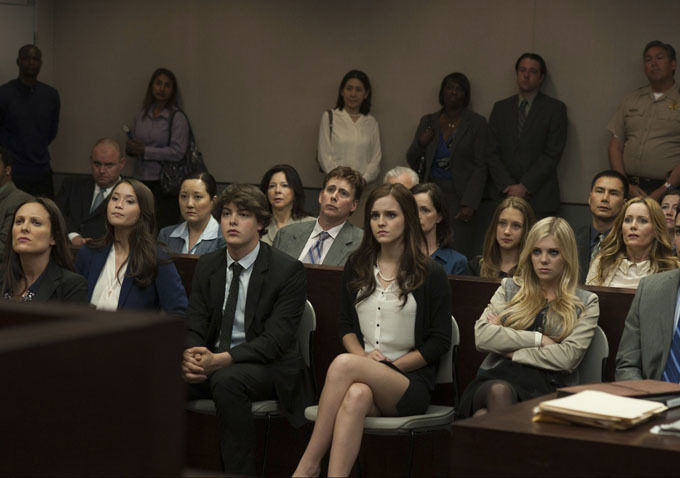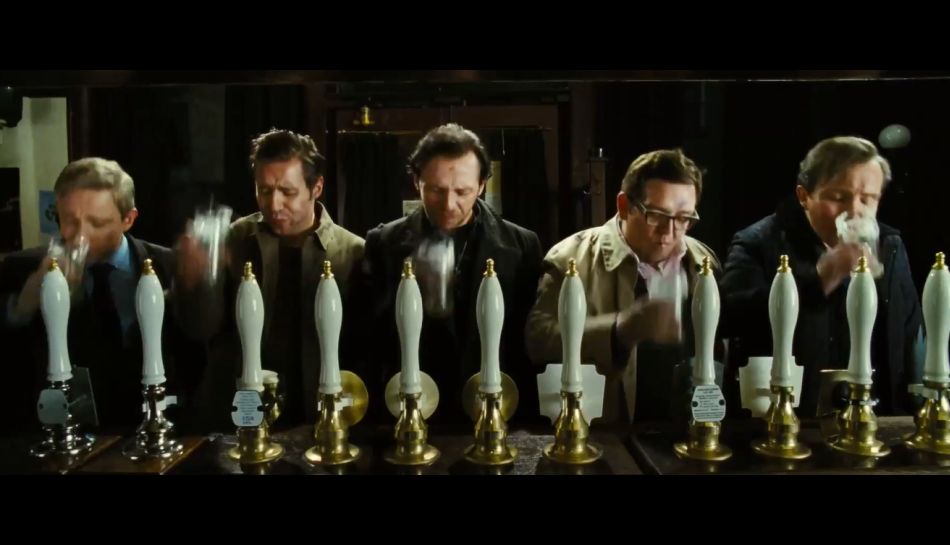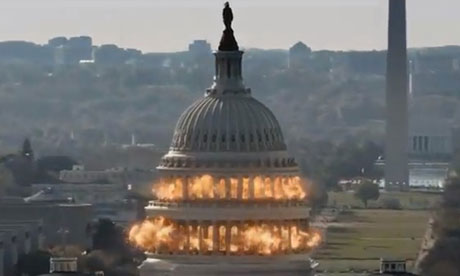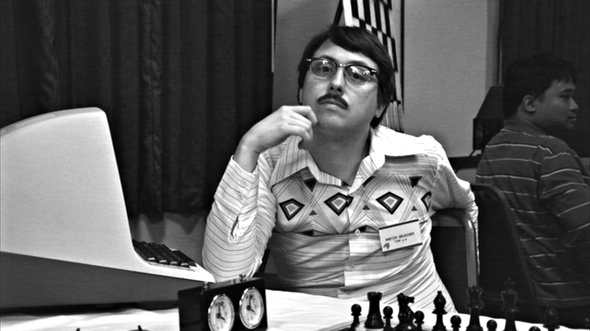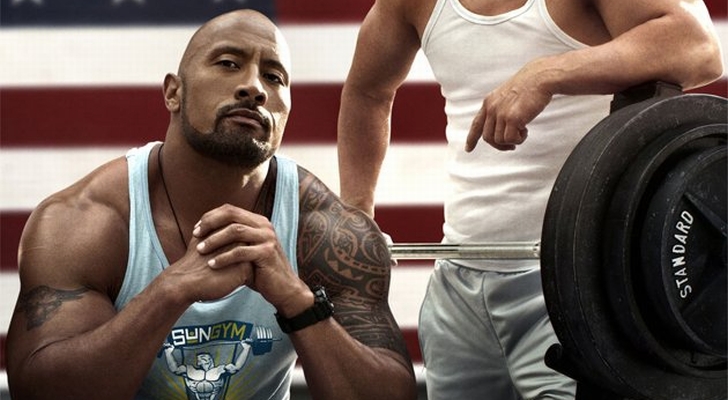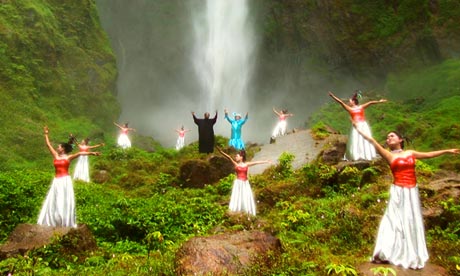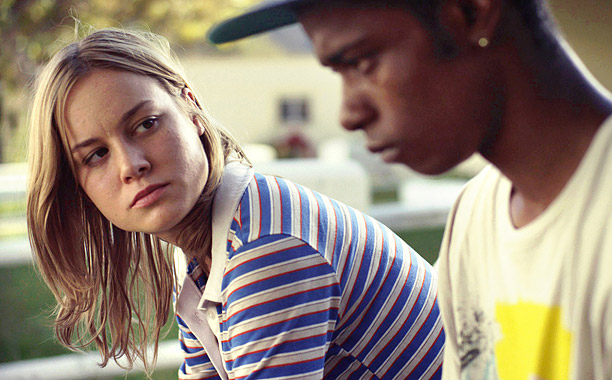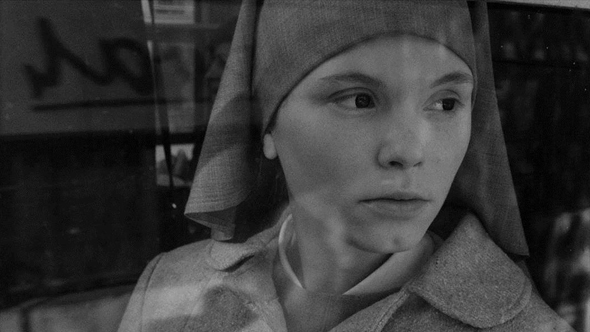‘British’ and ‘Cinema’ are
incompatible – Truffaut
Great
British cinema has endured a rather up and down history. Although seen as
light-weight and predictable in themes (social-realism after social-realism),
it has produced some of the most respected directors in cinema history,
stretching throughout the cinematic story. Chaplin, Hitchcock, Loach, Leigh,
Roeg, Scott, are just a few of that have stood-out for various reasons, and often their shadows have loomed large over British cinema, making others unable to escape their work. These
names, however, are normally the exception to the rule. British cinema has
historically not been considered on a par with others on a global scale. Often
the poor-relation in European cinema, it has looked westwards towards
Hollywood, rather than eastwards towards mainland Europe. This influence is
understandable, a shared language and similar culture has meant it is a far
more accessible form of cinema to understand to the average cinema-goer. It
would be easier to watch the latest American film, than the newest Italian one.
This has been exacerbated by a fear of mainland Europe from Britain, which can
be tracked through historical wars for hundreds of years. This unavoidable influence
can be seen in the shocking statistic that only 7 European countries (which
includes the likes of Monaco and the Vatican) have escaped attack from Britain. Distrust
of the European is an inbuilt fear within British culture that however has been
slowly eroded in the post-WW2 era. This has perhaps culminated with the joining
of the E.U in 1973 (although it has frequently faced opposition, including a
proposed referendum on the matter in the near future), which has led to the
opening of boarders within the E.U, and the growth of globalisation. Naturally,
closer neighbours such as France and Spain are bound to influence from Western
Europe where the ease of travel and tourism has meant many British citizens
have frequently visited. The playful and challenging natures of their national
cinemas have gradually left its footprints on British cinema. Just like this
influence from the West, rise of immigration from Eastern Europe, increasingly that
of Poland and Romania, has been also taken on the slower-paced nature of
Eastern Europe. The influences of directors such as Puiu or Mungiu are clear to
see in the works of Andrea Arnold, for example. This slow shift towards Europe,
and away from isolation (and America) has had a slow knock-on effect on British
cinema as well. While this by no means is saying that Hollywood is irrelevant
to British cinema (far from it), we are now looking at change of view, from
where before the British watched Europe through mistrust, it is now watched for
direction.

The
2000s in Great Britain represented a great shift in view, specifically towards
that of America. Post-9/11 and the outcome (or lack of) of wars in Afghanistan
and Iraq focused a lot of animosity to America. Statistics such as 41% of the
British population saying they ‘mistrusted’ America, or 40% using ‘bully’ to
describe the country,
are regularly pumped out by the media. This ‘mistrust’ inevitably spreads into
forms of media and art, and an irrational avoiding of works that have come
before from America. This, alongside the growth of accessibility of more
obscure European (as well as other) cinema, leads to an expected influence upon
the film-makers that have developed their works during post-2000s. The ease of
which people are able to find foreign films through DVDs, both released within
Britain, as well as those imported, have meant that it is just as easy to watch
a film by Tarkovsky, as it is to watch a film by Coppola.
Finally,
the failure of New Labour, and the arts cuts that followed during the
recessions, has forced filmmakers to become more creative with their works.
With supporting money becoming harder to obtain, films are forced to stand-out
from the crowd, and thus forced to challenge expectations. British cinema has
found itself at its most creative, just like many national cinemas, when it has
faced some of its hardest times to gain support.
These
combining factors have created a melting pot for Britain to create some of its
most interesting and challenging films, as well as most interesting filmmakers,
in its history. Since the end of the 2000s, British cinema has entered into a
golden era that has encompassed many different types of film, ones that have
reached across to America, but also towards Europe. What separates these
filmmakers is not only the fact they are far more European than those of the
past, but also the sheer numbers of filmmakers who are now creating pieces that
are respected by their peers. Whereas in the past, a few may make it, now a
whole host are continuing to break through year on year. Each director that is
to be mentioned in this piece is only touched upon within the respect of what
is their most important work within this wave, however each director has a deep
and interesting catalogue of films that can almost equally be considered. Many
directors that are extremely important figures as well have not been mentioned,
but their films will be noted additionally to this piece with an accompanying
list of films.
The First Seeds
Although
extremely early in the growth of New British Cinema, 2000 saw two key films
appear, key for conflicting reasons.
Memento (2000) by Christopher Nolan, a joint citizen of the United States
and Great Britain, received acclaim at its premier at the Venice Film Festival.
It became a film that managed to jump the independent boundary in America, and
become a part of American culture of the 2000s. The story-telling method used
by Nolan, one that is far removed from that of traditional Hollywood
mainstream, seems far more European than most American independent hits. With
the success of Memento, Nolan was
given the chance to delve deeper into American cinema, while being able to
maintain a form of distance from it due to his close affiliation with Great
Britain. What Memento showed, as well
as the subsequent success of the Batman films, is the ability to move into the
Hollywood mainstream, while maintaining a strong voice. Nolan, more than anyone
in recent years, has managed to harness his position in Hollywood to use their
power and money to demonstrate that audiences can handle new and changeling
ideas. This leap from independent filmmaker to Hollywood director, although peaking
in the 90s American cinema, was arguably taken to a new level by Nolan, as
would later be seen with Inception
(2010), a form of companion piece to Memento.

Just
over a week afterwards the other key British film of 2000 was released, Sexy Beast (2000). The debut feature by
Jonathan Glazer, takes a tired British format, the London gangster flick, takes
a regular gangster actor, Ray Winstone, and relocates it to Spain. What grows
from this is a stylish picture that stands out from the traditional dark and grungy
gangster film that became the calling-card for many British film makers. Glazer
plays with genre expectations, not through subverting, but through embracing
and using them in fresh and creative ways. The sunburnt skin of Winstone is
something that is not uncommonly seen on the beaches in Spain, as tourist from
Britain regularly flock to the Spanish coasts during the summer. Sexy Beast is one of the first to
replicate this common holiday image. British cinema had become far too
comfortable churning similar types of films that it had become associated with.
The cheeky-chappy East End gangster guy, or the social-realism cinema of Ken
Loach. These comfortable expectations became limiting to filmmakers who felt
this type of film was to be aspired to, rather than to challenge. Sexy Beast uses the expectations of the
gangster film, and gives them a new lease of life. Playing with genre without
mocking has become a regular theme in New British Cinema, fully embraced by one
of the best directors to come out of Great Britain, Edgar Wright.
 Shaun of the Dead (2004) was the first feature by
Wright, and the first of his ‘Cornetto trilogy’, followed by Hot Fuzz (2007) and The Worlds End (2013), all of which were met with critical acclaim.
Wright’s visual playfulness which is supported by regular cast members, engages
and plays with genre. Wright is self-schooled with American genre films, but
relocates them to Great Britain for comical effect. Shaun of the Dead takes the zombie film, and relocates it to the Winchester
Pub, where survivors fight off zombies with cricket bats while dancing to
Queen. Hot Fuzz takes the action
flick to rural Gloucestershire, where Hollywood obsessed cops fight the
mundane, and finally The Worlds End
taking on the alien invasion, alongside the commercialisation of British
culture and it being water downed by American. Wright though, is also clearly
educated in European cinema, regular mixing it with the more obvious American
influence. The ‘Cornetto’ idea itself is a play on the ‘Three Colours’ trilogy
of Kieslowski, which helps connects the three films. He is just as happy to
play on this influence, as he is to play with the likes of Evil Dead II (1987). Wright is perhaps the most visually
distinctive filmmaker working in Britain today, and his wide film knowledge
that pulls references from America and Europe, while using Great Britain as the
mixing pot, gives his work a unique style.
Shaun of the Dead (2004) was the first feature by
Wright, and the first of his ‘Cornetto trilogy’, followed by Hot Fuzz (2007) and The Worlds End (2013), all of which were met with critical acclaim.
Wright’s visual playfulness which is supported by regular cast members, engages
and plays with genre. Wright is self-schooled with American genre films, but
relocates them to Great Britain for comical effect. Shaun of the Dead takes the zombie film, and relocates it to the Winchester
Pub, where survivors fight off zombies with cricket bats while dancing to
Queen. Hot Fuzz takes the action
flick to rural Gloucestershire, where Hollywood obsessed cops fight the
mundane, and finally The Worlds End
taking on the alien invasion, alongside the commercialisation of British
culture and it being water downed by American. Wright though, is also clearly
educated in European cinema, regular mixing it with the more obvious American
influence. The ‘Cornetto’ idea itself is a play on the ‘Three Colours’ trilogy
of Kieslowski, which helps connects the three films. He is just as happy to
play on this influence, as he is to play with the likes of Evil Dead II (1987). Wright is perhaps the most visually
distinctive filmmaker working in Britain today, and his wide film knowledge
that pulls references from America and Europe, while using Great Britain as the
mixing pot, gives his work a unique style.
These
three films show the seeds in which British cinema started to expand, by
influencing Hollywood, by reaching towards Europe, as well as the merger of the
two. Each film represents the start of these three strands, which started to
fully blossom towards the end of the 2000s.
Festival Recognition
2008
saw a shift in tone in British cinema with, Hunger
(2008), by Steve McQueen. A former artist, who had experimented with short
films, Hunger was shown at the 2008
Cannes Film Festival in the Un Certain Regard section, where McQueen won the Camera D’or for best debut feature
by a director. Hunger pushed away
traditional narrative and instead focused on the hunger strike mainly through
the use of visuals. This shunning, and its end result is undeniable European in
style, and undeniable successful in doing so. McQueen has said that he “could
never make American movies”,
and his free-wheeling style of narrative and technique supports this statement.
Leaving film school in America, because “they wouldn’t let you throw the camera
up in the air”
is a strong shift away from the tradition look of British cinema, which while
often willing to follow characters around dirty streets, has been scared to
push and experiment with limitations. His comfort in showing the human body in
all of its beauty and ugliness, something which can be seen as well in the
follow up, Shame (2011), is none too
dissimilar to much the French New Wave, where the body has never been a taboo.
This has traditionally been the case in Great Britain, where modesty must be
kept at all times. McQueen has become, alongside Wright, the outstanding figure
in modern British cinema, remaining uniquely British, embracing European style,
while projecting onto America. Recognition for a new British director had been
extremely rare on the European mainland, and to receive it at the most
prestigious of festivals kicked off a stream of British films that were picked
up at festivals.

Fish Tank (2009), the second feature film
of Andrea Arnold, followed a similar path of McQueen. Showing at Cannes, and
winning the Prix du Jury prize (a prize she also won for debut feature, Red Road (2006)), Fish Tank takes the average social realism film, and adds the
wondering camera and looseness of European cinema into the council estates of
Britain. Similar to Sexy Beast, Fish Tank takes a tired staple of
British cinema and adds a refreshing feel to it. Symbolism is embraced, rather
than grimy back-alleys, and an admiration for nature which is contrasted to the
‘concert jungle’ of the estate. Her follow-up feature, Wuthering Heights (2011) is an incredible bare-bones adaptation of
the Emily Bronte novel. Previous adaptations had taken on a literary approach,
attempting to stick as close to the novel as possible. Arnold however takes a Malickan
approach to the novel, using little dialogue and uses nature to re-tell the
story. Wuthering Heights could be Days of Heaven(1978) if it was relocated
to Yorkshire. Her revisionism of a key British text ignores all that has come
before it, and rather allows for the cinematic language to take over. Her
willingness to use silence and wondering camera work, supported by DoP Robbie
Ryan, creates a fresh style that embraces the Yorkshire Moors for all of its
ugliness and beauty. Arnold herself has become a regular on festival juries,
including working for Cannes in 2012, and Venice in 2013, and a regular feature
on the European film circuit.

The Arbor (2010) takes another culturally
important text from British history, and implants a creative and unique spin on
it. The Arbor is a documentary by
Clio Bernard, which uses actors to mime over the voices of people involved in
the life of play write, Andrea Dunbar and her time in Bradford. Dunbar, who
wrote Rita, Sue and Bob Too, is used
to show the dangers of life in poverty as well as racism that can often be bred
from it. Bernard is clearly interested in representing the life of the
marginalised, as can be seen with her follow-up feature The Selfish Giant (2013), but just as with Andrea Arnold, she is
willing to embrace new ways for British cinema to represent the council estates
of Great Britain.
Steps into Hollywood – Off Kilter
Mainstream
Christopher
Nolan and Edgar Wright, perhaps the two directors from the wave of British
directors most versed in American cinema, are unsurprisingly the two that have
made greatest inroads into American cinema. Inception,
the £100million project awed audiences and won a number of plaudits for its
refusal to dumb itself down, a common complaint of Hollywood blockbusters.
Released as the big summer film of 2010, Inception
is refreshing in simple fact it’s a big budget film, made for adults, and rather
than shying away from the complexities of Memento,
he runs with its idea and transforms them into a big budget puzzle. The
more thought-out blockbuster, films such as Prometheus
(2012) or Gravity (2013), may not
have been able to happen with Inception taking
the first leap. The influence of Inception
is still reverberating around Hollywood, and looks set to be continued with
his next project, Interstellar (2014).

Scott Pilgrim vs. The World (2010) in many ways is the
anti-Nolan film, however, and influence on Hollywood is a lot less great, but
is a unique take on the comic book film. Nolan changed how the comic film was made
with his Batman trilogy, he took on an extremely serious tone, and located it
into the real world, a style that would be replicated in most comic book films
that followed. Wright’s Scott Pilgrim vs.
the World however would go and celebrate the comic book in all of its
glory. Its over-the-top humour, mixture of comic book and video game
references, and the non-stop action, Wright maintains a constant onslaught on
the audience. Although not as widely well received in America as within
Britain, it did secure him the directing duties for Marvel’s newest feature, Ant Man, due out in 2015. Marvel has
grown into one of the most powerful studios in the American system, and
entrusting Wright to front one of their films can be seen as his integration
into the American system. The work of Scott
Pilgrim vs. the World, however suggest that there is little chance of him
losing his distinctive style in order to win American audiences over. Scott Pilgrim vs. The World draws many
of its influences from the computer games world, one of which is dominated by
Japan and America. Wright is extremely versed within this language just as much
as that of cinema’s, and is sure to be seen as one of the first directors to
openly display this influence in cinema.
 Perhaps
one of the strangest examples of the British cinema in Hollywood is the
fantastic Les Misérables (2012), by
Tom Hooper. The follow-up to his extremely Hollywood-friendly The Kings Speech (2010), Les Misérable is a strange, challenging,
and eclectic piece of cinema that refuses to limit itself in order to please
audiences. In many similar ways to Nolan and Inception, Hooper used his Hollywood pulling power that he gained
after winning Best Director at the Oscars for The Kings Speech
, in order to go even bigger with his next project. Les Misérables is unashamedly big, brash, and European in style, with
its subject matter, and themes. The extremely successful musical has never
translated well onto the screen due to this size, but Hooper manages to keep a
hold of all the strings in the story, and fills it with his distinctive composition
of images. The influences of Fellini and his encompassing compositions of life
in Italy run in a similar way to how Hooper shows the rich and poor in early
1800s Paris. At the core of all of this however, Hooper maintains a strong,
emotional pull that as soon as it has hold of the audience, refuses to let go.
Despite its Oscar nominations, Les
Misérables was unsurprisingly better received on the continent than in
America. Much bewilderment was met by many who were expecting a far more
easy-going The Kings Speech follow-up,
which follows the more traditional lines of British cinema. However, what was
produced was arguably the best films from Great Britain of 2012.
Perhaps
one of the strangest examples of the British cinema in Hollywood is the
fantastic Les Misérables (2012), by
Tom Hooper. The follow-up to his extremely Hollywood-friendly The Kings Speech (2010), Les Misérable is a strange, challenging,
and eclectic piece of cinema that refuses to limit itself in order to please
audiences. In many similar ways to Nolan and Inception, Hooper used his Hollywood pulling power that he gained
after winning Best Director at the Oscars for The Kings Speech
, in order to go even bigger with his next project. Les Misérables is unashamedly big, brash, and European in style, with
its subject matter, and themes. The extremely successful musical has never
translated well onto the screen due to this size, but Hooper manages to keep a
hold of all the strings in the story, and fills it with his distinctive composition
of images. The influences of Fellini and his encompassing compositions of life
in Italy run in a similar way to how Hooper shows the rich and poor in early
1800s Paris. At the core of all of this however, Hooper maintains a strong,
emotional pull that as soon as it has hold of the audience, refuses to let go.
Despite its Oscar nominations, Les
Misérables was unsurprisingly better received on the continent than in
America. Much bewilderment was met by many who were expecting a far more
easy-going The Kings Speech follow-up,
which follows the more traditional lines of British cinema. However, what was
produced was arguably the best films from Great Britain of 2012.
2013,Beyond and the Others– The
Strange and the Unexpected.
Reaching
the conclusion of 2013, the original set of directors who started to come into
the limelight in the late 2000s have continued to make challenging films, with
directors crisscrossing between acceptance in Hollywood, many of whom maintain
their distinctive styles, while others continue genre revisionism. By returning
to two of the key directors in the wave, Steve McQueen and Jonathan Glazer, we
can see exactly how far British cinema has come in a short space of time.
 The
Oscars, even in Great Britain, has been seen as the pinnacle of filmmaking. Britain
has not been unaccustomed to winning the prestigious Best Picture, or Best
Director (9 directors in total) awards. These films have nearly always been the
stereotypic British film that shows off its regal-ness, or by someone who has
been assimilated into American cinema.
However, Steve McQueen newest feature, 12
Years a Slave (2013) takes an incredible sensitive subject, slavery in
America, and examines it in great detail. Whereas a more recent example of
slavery in America, Django Unchained
(2012), attempted to retell its history, 12
Years a Slave shows it in all of its gory-detail, without the distancing
nature that Django Unchained creates
through its use of humour and comedy. A Brit coming in as an outsider to
examine has created a strange reaction in American media, perhaps most controversially
seen in an article by actor James Franco, “Funny that McQueen and many of his
actors are non-Americans telling America history. Not that he shouldn’t, but it’s
funny to think about it” contains
hints of an uneasiness of an outsider portraying American history in such a
brutal way. By taking on such a negative story of American history, McQueen
demonstrates the newfound self-confidence that is currently evident in modern
British cinema. In the past, British directors were stuck in a routine of
costume dramas and gangster flicks, McQueen has paved the way to a more
challenging type of cinema. McQueen has managed to show a progression however
in his work, which has surprisingly seen him accepted into the mainstream conciseness
of America. His previous feature, Shame, was
discussed as an outsider for awards season, though was unsurprisingly ignored.
A film with hardcore sex and unabashed showing of the human body was always
extremely unlikely to get approval from Hollywood, dealing with a subject matter
typically European. 12 Years a Slave, however,
has managed to avoid this same fate, dealing with a topic that undeniably intertwined
with American history. It has managed to receive award recognition for its
style and approach, winning the People’s Choice Award at the Toronto Film
Festival, thus making it almost a shoe-in for Best Film and Director Nominations
at the least. McQueen, perhaps one of the most European-like directors to come
out of Britain, has become one of the most unlikely to become accepted into the
Hollywood world. McQueen has managed to force his way purely through the
quality of his films, rather than then through its subject matter. He has taken
on topics that are extremely un-commercial, but allowed himself the freedom to explore
such themes.
The
Oscars, even in Great Britain, has been seen as the pinnacle of filmmaking. Britain
has not been unaccustomed to winning the prestigious Best Picture, or Best
Director (9 directors in total) awards. These films have nearly always been the
stereotypic British film that shows off its regal-ness, or by someone who has
been assimilated into American cinema.
However, Steve McQueen newest feature, 12
Years a Slave (2013) takes an incredible sensitive subject, slavery in
America, and examines it in great detail. Whereas a more recent example of
slavery in America, Django Unchained
(2012), attempted to retell its history, 12
Years a Slave shows it in all of its gory-detail, without the distancing
nature that Django Unchained creates
through its use of humour and comedy. A Brit coming in as an outsider to
examine has created a strange reaction in American media, perhaps most controversially
seen in an article by actor James Franco, “Funny that McQueen and many of his
actors are non-Americans telling America history. Not that he shouldn’t, but it’s
funny to think about it” contains
hints of an uneasiness of an outsider portraying American history in such a
brutal way. By taking on such a negative story of American history, McQueen
demonstrates the newfound self-confidence that is currently evident in modern
British cinema. In the past, British directors were stuck in a routine of
costume dramas and gangster flicks, McQueen has paved the way to a more
challenging type of cinema. McQueen has managed to show a progression however
in his work, which has surprisingly seen him accepted into the mainstream conciseness
of America. His previous feature, Shame, was
discussed as an outsider for awards season, though was unsurprisingly ignored.
A film with hardcore sex and unabashed showing of the human body was always
extremely unlikely to get approval from Hollywood, dealing with a subject matter
typically European. 12 Years a Slave, however,
has managed to avoid this same fate, dealing with a topic that undeniably intertwined
with American history. It has managed to receive award recognition for its
style and approach, winning the People’s Choice Award at the Toronto Film
Festival, thus making it almost a shoe-in for Best Film and Director Nominations
at the least. McQueen, perhaps one of the most European-like directors to come
out of Britain, has become one of the most unlikely to become accepted into the
Hollywood world. McQueen has managed to force his way purely through the
quality of his films, rather than then through its subject matter. He has taken
on topics that are extremely un-commercial, but allowed himself the freedom to explore
such themes.
 Where
McQueen has moved towards Hollywood acceptance, Glazer has moved away from
Hollywood, with his latest and third feature, Under the Skin (2013). Starring A-lister Scarlett Johansson, Under the Skin switches the gender role
of the male gaze, and places Johansson in Scotland as an alien who preys on
hitchhikers. The slow, strange pace and subject matter has received reviews
that have stretched from it being referred to as a masterpiece, while others
call it “laughably bad”.
Met with a split of cheers and boos at the Venice Film Festival, reviewer Xan
Brooks commented in his five star review that “When a strange and unclassifiable
beast walks into the world, the public has a tendency to split down the middle.
One camp is beguiled and the other repulsed”.
This type of controversial film has been an all too rare phenomenon in British
cinema, nearly always more comfortable aiming shooting for the middle, rather
than taking the risk to aim high and failing. Glazer has seemingly taken on the
idea of genre revisionism again, as seen in Sexy
Beast, and given a fresh lease of life.
Where
McQueen has moved towards Hollywood acceptance, Glazer has moved away from
Hollywood, with his latest and third feature, Under the Skin (2013). Starring A-lister Scarlett Johansson, Under the Skin switches the gender role
of the male gaze, and places Johansson in Scotland as an alien who preys on
hitchhikers. The slow, strange pace and subject matter has received reviews
that have stretched from it being referred to as a masterpiece, while others
call it “laughably bad”.
Met with a split of cheers and boos at the Venice Film Festival, reviewer Xan
Brooks commented in his five star review that “When a strange and unclassifiable
beast walks into the world, the public has a tendency to split down the middle.
One camp is beguiled and the other repulsed”.
This type of controversial film has been an all too rare phenomenon in British
cinema, nearly always more comfortable aiming shooting for the middle, rather
than taking the risk to aim high and failing. Glazer has seemingly taken on the
idea of genre revisionism again, as seen in Sexy
Beast, and given a fresh lease of life.
The
films discussed only represent a small section of filmmakers who have had a
major influence in British cinema, and I have ignored many purely due to the
sheer amount of directors. Ben Wheatley, clearly influenced by Edgar Wright
(who produced Wheatley’s third feature, Sightseers
(2012)) and his mixtures of violence and mergers of genre have sparked the
low-budget scene in Britain. Another disciple of Wright, Joe Cornish, also
demonstrated similar themes with his mixture of sci-fi and the London estate in
Attack the Block (2011). Richard
Ayoade has displayed his love for the French New Wave in his debut Submarine (2010) and Russian literature with
The Double (2013). Lynne Ramsey
throughout the 2000s has been at the end of critical praise, most recently with
the adaptation of the extremely successful novel, We Need To Talk About Kevin (2011). A seemingly never ending stream
of directors seem to be cropping up at regular intervals within British shores,
each offering fresh takes on tired genres, new influences from Europe, and in
general, really good films.
DANNY MOLTRASI
 Ben Wheatley’s mixture of hallucinogenics
and 16th century England created more of a stir for its simultaneous
release in cinemas, VOD and DVD on the same day. A Field in England however is a crazy puzzle of a film that never
reveals itself too much to the audience. The magic mushroom scene is one of the
best moments of 2013 cinema. Wheatley is a unique figure in British cinema.
Ben Wheatley’s mixture of hallucinogenics
and 16th century England created more of a stir for its simultaneous
release in cinemas, VOD and DVD on the same day. A Field in England however is a crazy puzzle of a film that never
reveals itself too much to the audience. The magic mushroom scene is one of the
best moments of 2013 cinema. Wheatley is a unique figure in British cinema. Despite the backlash after its Palme D’or
win, Blue is the Warmest Colour remains
a powerful no holding back feature on how love comes and goes. Held together by
two fantastic leading performances, which Kechiche allows to flourish by using
constant close-ups of both Exarchopoulos and Seydoux.
Despite the backlash after its Palme D’or
win, Blue is the Warmest Colour remains
a powerful no holding back feature on how love comes and goes. Held together by
two fantastic leading performances, which Kechiche allows to flourish by using
constant close-ups of both Exarchopoulos and Seydoux. 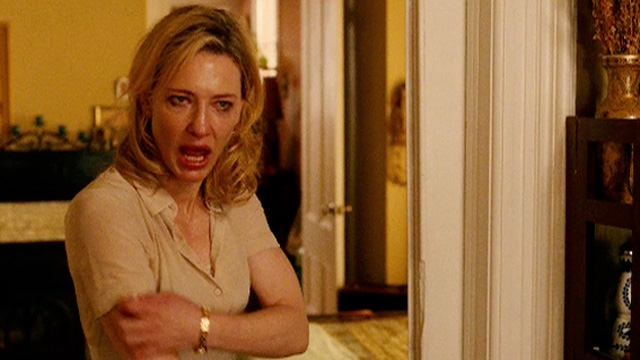 Blue
Jasmine holds
back nothing in its portrayal of depression, and both Woody Allen and Cate
Blanchett deserve equal praise for their work. Allen plays against the comedic
expectations that follow him extremely well, when scenes that could have easily
have been funny, instead become traumatic to watch.
Blue
Jasmine holds
back nothing in its portrayal of depression, and both Woody Allen and Cate
Blanchett deserve equal praise for their work. Allen plays against the comedic
expectations that follow him extremely well, when scenes that could have easily
have been funny, instead become traumatic to watch.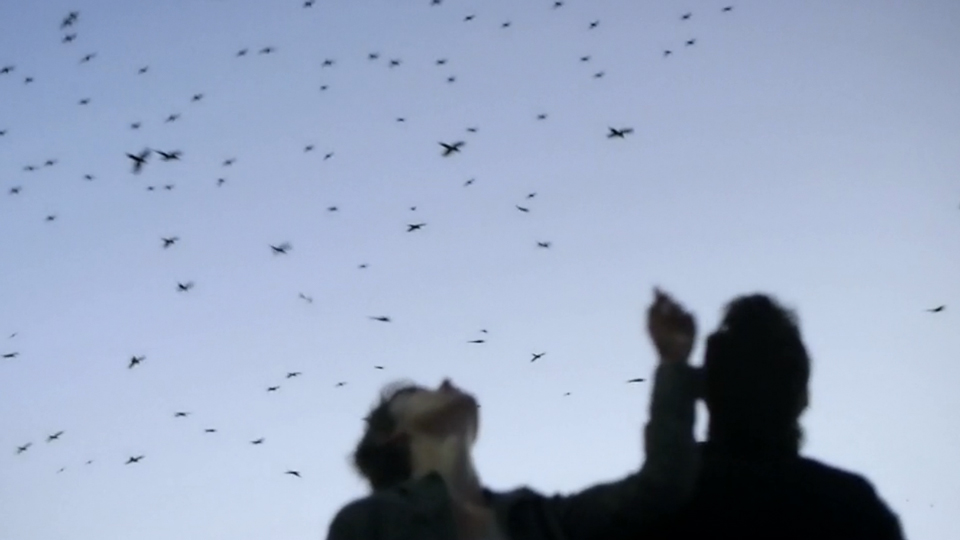 It took 9 years, but Upstream Colour is the follow-up that
has more than matched the expectations that followed Shane Carruth after his début
feature, Primer. Carruth comfortably
floats between symbolism and fragments of stories that always just seem out of
reach. We are never left completely behind with the story, yet always one step
behind. An extremely hard thing to do, but Carruth does it with ease.
It took 9 years, but Upstream Colour is the follow-up that
has more than matched the expectations that followed Shane Carruth after his début
feature, Primer. Carruth comfortably
floats between symbolism and fragments of stories that always just seem out of
reach. We are never left completely behind with the story, yet always one step
behind. An extremely hard thing to do, but Carruth does it with ease. Just what you want to see from an extremely high-budget film from Hollywood. The technical achievements are clear to see, the long takes that require an incredible amount of pre-planning. However Gravity is more than just a little bit of showing off. It taps into fears of death, isolation, rebirth, nature, evaluation and survival, all in 90 minutes. The recycling of high budget, hollow comic-book films with little redeeming value is put to shame by the work of Cuaron and Lubezki.
Just what you want to see from an extremely high-budget film from Hollywood. The technical achievements are clear to see, the long takes that require an incredible amount of pre-planning. However Gravity is more than just a little bit of showing off. It taps into fears of death, isolation, rebirth, nature, evaluation and survival, all in 90 minutes. The recycling of high budget, hollow comic-book films with little redeeming value is put to shame by the work of Cuaron and Lubezki.